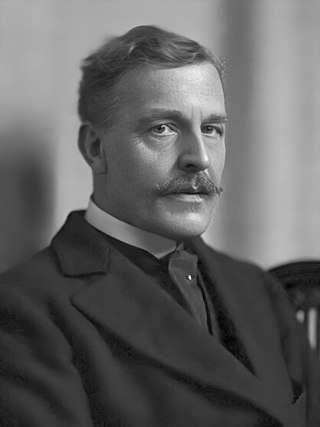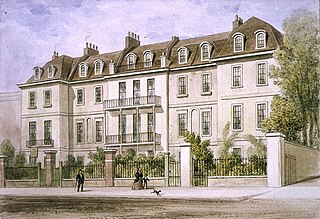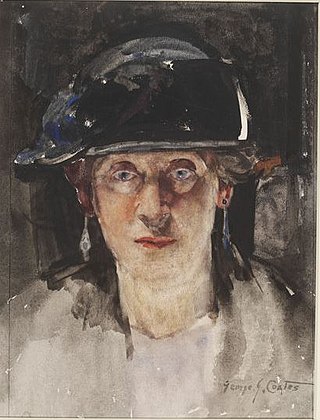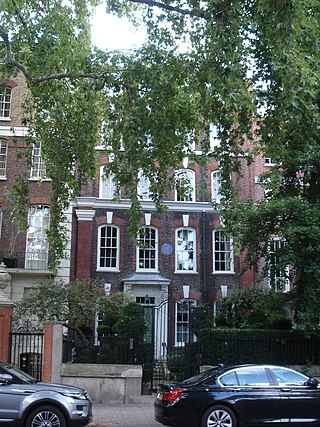
Chelsea is an affluent area in West London, England, due south-west of Charing Cross by approximately 2.5 miles. It lies on the north bank of the River Thames and for postal purposes is part of the south-western postal area.

Cheyne Walk is a historic road in Chelsea, London, England, in the Royal Borough of Kensington and Chelsea. It runs parallel with the River Thames. Before the construction of Chelsea Embankment reduced the width of the Thames here, it fronted the river along its whole length.

Philip Speakman Webb was a British architect and designer sometimes called the Father of Arts and Crafts Architecture. His use of vernacular architecture demonstrated his commitment to "the art of common building." William Morris, Edward Burne-Jones and Dante Gabriel Rossetti were his business partners and he designed many notable buildings including one for Morris. He co-founded the Society for the Protection of Ancient Buildings.

Chelsea Embankment is part of the Thames Embankment, a road and walkway along the north bank of the River Thames in central London, England.

Sir James Guthrie was a Scottish painter, associated with the Glasgow Boys. He is best known in his own lifetime for his portraiture, although today more generally regarded as a painter of Scottish Realism.

George James Coates was an Australian painter, primarily dealing with portraits. He worked as an official war artist to the Australian government in 1919, and from then on specialised in war subjects until his death in 1930.

Tite Street is a street in Chelsea, London, England, within the Royal Borough of Kensington and Chelsea, just north of the River Thames. It was laid out from 1877 by the Metropolitan Board of Works, giving access to the Chelsea Embankment.

Lindsey House is a Grade II* listed villa in Cheyne Walk, Chelsea, London. It is owned by the National Trust but tenanted and only open by special arrangement.
The Artists' Suffrage League (ASL) was a suffrage society formed to change parliamentary opinion and engage in public demonstrations and other propaganda activities.

Dora Meeson (1869–1955) was an Australian artist, suffragist, and an elected member of the Royal Institute of Oil Painters in London, England. She was a member of the British Artists' Suffrage League.

4 Cheyne Walk is a Grade II* listed house on Cheyne Walk, Chelsea, London, built in 1718 and architecturally in the Queen Anne style. There is a blue plaque noting that the novelist George Eliot lived there until her death. In 2015, it was acquired by former New York City mayor Michael Bloomberg.

West House is a Grade II* listed Queen Anne revival house at 35 Glebe Place, Chelsea, London. It was built in 1868–69 by the architect Philip Webb, on behalf of the artist George Price Boyce. It was extended in 1876 by Webb, and in 1901 by an unknown architect. Historic England have described West House as "one of the earliest examples of the Queen Anne Revival style". West House possesses one of the few triple-height ceilings in London.

50 Glebe Place is a large terraced house on Glebe Place in the Chelsea district of London SW3. It was built between 1985 and 1987 for the advertiser Frank Lowe. Ed Glinert, in The London Compendium, described it as a folly.

John Samuel PheneFRGS, FSA, FRIBA was a British architect, who lived in Chelsea, London, for more than 50 years.

Oakley Street is in the Royal Borough of Kensington and Chelsea, London. It runs roughly north to south from King's Road to the crossroads with Cheyne Walk and the River Thames, where it continues as the Albert Bridge and Albert Bridge Road. The street was named after Baron Cadogan of Oakley.

Cheyne Row is a residential street in Chelsea, London.

Alfred Ernest Egerton Cooper, RBA, ARCA, was a British painter of portraits, landscapes and other figurative work. In the era of Modernism, he continued to work in traditional style from his studio in Chelsea, London.
The Blue Cockatoo was a restaurant in Cheyne Walk, Chelsea, London, at the corner with Oakley Street. It is considered to have been England's first bistro.



















